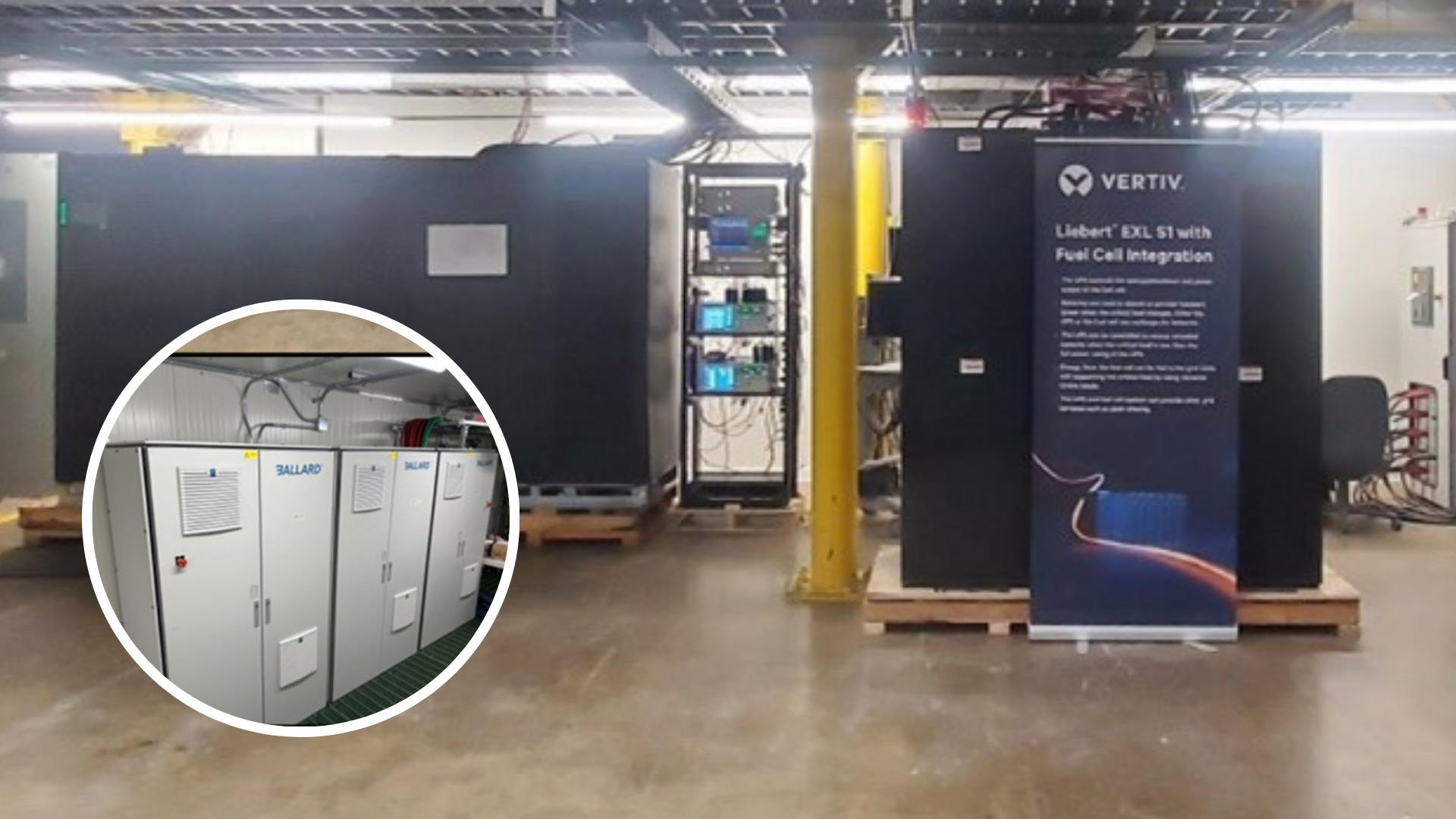
Vertiv, a global provider of critical digital infrastructure and continuity solutions, and proton-exchange membrane (PEM) fuel cell market leader, Ballard Power Systems, have entered into a strategic technology partnership with a focus on back-up power applications for data centers and critical infrastructure, scalable from 200kW to multiple megawatts.
The 400kW fuel cell system integrated into Vertiv’s Power Module H2 solution is part of the 1MW Vertiv Customer Experience Center microgrid including a 1MW AC Solar photovoltaic (PV) array and Vertiv™ DynaFlex Battery Energy Storage System (BESS).
Based on industry-ready components, Vertiv's Power Module H2 - demonstrated at their Delaware, Ohio facility - integrates two Ballard PowerGen® 200kW fuel cell cabinets, which power the fully functional decarbonized back-up system. The solution encompasses a complete cooling sub-system, power conditioning equipment and hydrogen storage infrastructure integrated with Vertiv™ HPL Lithium-Ion batteries, Liebert® EXL S1 UPS system, and the Vertiv™ DynaFlex Energy Management Controller.
During the past six months, Vertiv conducted an array of quality and reliability tests to validate the proof-of-concept performances and held multiple customer demonstrations. Validation consists of:
- Mains failure fuel cell automatic start-up and load support
- Block loading while on fuel cell
- Fuel cell recharging the Lithium-Ion battery without mains power
- Mains return uninterrupted power supply (UPS) restart, power walk-in, and fuel cell return to standby
Today, most data centers rely on emissions-heavy diesel generators to provide extended back-up power. In contrast, a fuel cell generator consuming low-carbon hydrogen generates zero-emission electrical power, which presents an essential development for a sector facing increasing pressure and scrutiny from public authorities and communities to reduce or eliminate carbon emissions.
PEM fuel cells provide a reliable alternative to stand-by diesel generators with low maintenance, rapid ramp-up to full power, limited footprint, high cyclability and competitive total cost of ownership when compared to other zero-emission solutions.
The hydrogen fuel cell power generator can operate as a stand-by or primary generator. A UPS system powered by fuel cells and a grid-interactive controller can connect and disconnect from the grid as needed. When used as a back-up microgrid, it can reduce vulnerability caused by utility outages by using several connected distributed energy storage resources.